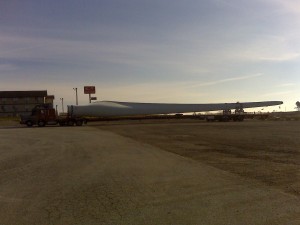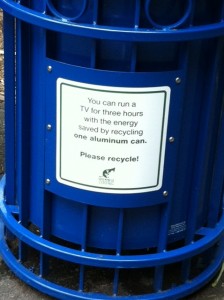Last week I flew from Philadelphia to Buffalo and from 30,000 feet up in the air, all I could see through the clouds were several wind turbines. Which seemed appropriate since I had just finished reading Ronald Wright’s post apocalyptic climate change version of HG Wells “The Time Machine”. In “A Scientific Romance”, David Lambert, a love-addled archaeologist comes into possession of a true time machine and sets off for the future to find a cure for mad cow disease which both he and his now dead former lover have inexplicably contracted … Arriving in the UK of 2500 he finds only the burned remains of our once great civilization and only one pocket of survivors. Ironically we destroyed ourselves with nuclear war after climate change destroyed our bodies and minds, and brought on all diseases with the subsequent loss of medicine. The survivors, a tribe of black Scots with dreadlocks, are the result of genetic alterations to create black Europeans since dark skinned humans seem to fare better in the new ozone-less world. It is both as ridiculous and possible as it seems. I found it particularly frightening because it was written in 1997 and just last week I read an essay in the NY Times that proclaimed that no matter what we did as individuals to ward off climate change we were woefully late and terribly slow.
Don’t Give Up
After reading that Opinion, it would be really easy to give up. (Although the author too says “don’t give up!”) Stop recycling. Don’t evaluate products and materials. Let the water run when you brush your teeth. Leave the lights on in every room all the time. Leave the air conditioning running all summer and the heat running all winter. Demolish buildings, especially historic ones, and build, build, build. But I refuse to believe that we can’t make a difference. If a butterfly’s fluttering wings in South America can possibly impact our actions in the Northeast, then why can’t recycling in Washington, DC help to stop climate change. I for one, am not giving up.
More Sci-Fi
I’m reading another post-apocalyptic sci-fi novel this week “A Canticle for Leibowitz”, and once again a nuclear holocaust has destroyed the world and a thousand years later humans have barely climbed out of the black holes they created. But one shining blueprint of one piece of radio technology (from the Leibowitz of the title) has survived the millennia and may be the hope for a new future (I haven’t finished the book yet so I may be totally off on the real focus of the story). Some people try to hide it, others want to make sure the leading thinkers have access to it. We seem to often find ourselves in this place – trying to hide or ignore information, whether it was 50 years ago when this book was written, or today with the chaos of our political system. I won’t give up on thinking I can make a difference with climate change and I won’t give up thinking that knowledge can only ultimately be good.
And maybe that’s why I’m reading my way through NPR’s 100 best science fiction and fantasy novels right now – because everything we’re finding out today was already thought of and written about, and sometimes I think that I can learn as much about our current predicament from sci-fi as I can from the New York Times.
And if you’d like to “subscribe” or follow this blog, True Green Cities, please sign up through the “Subscribe” button at the bottom left of this page. You’ll receive a daily recap when new blogs are posted.


